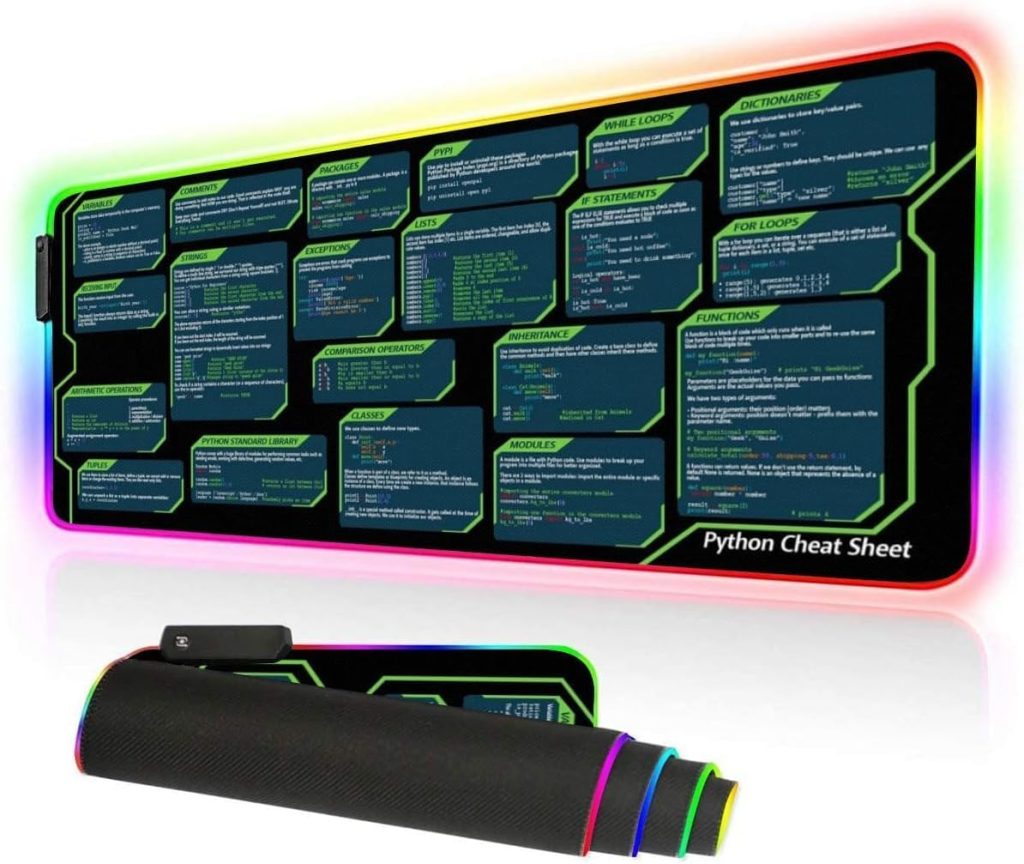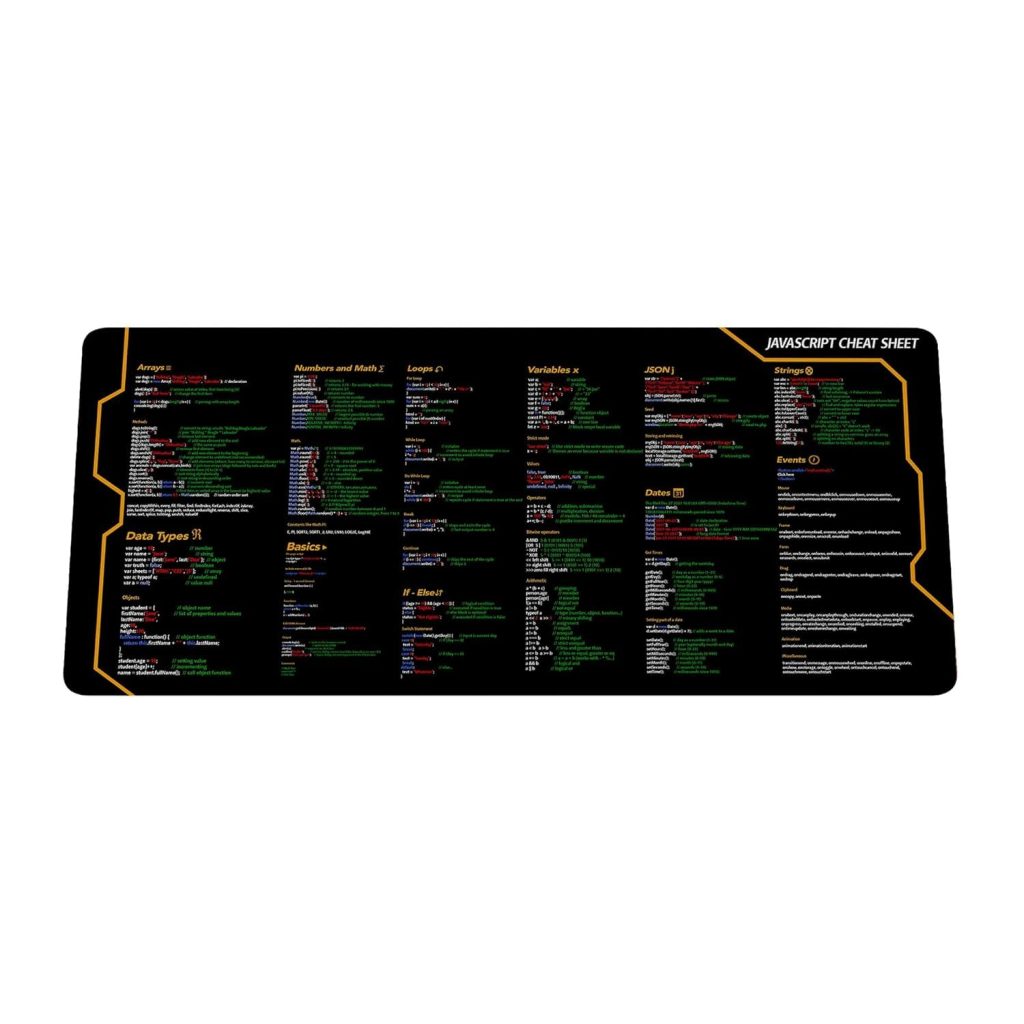
Pygame provides robust support for working with fonts, allowing developers to customize text rendering in their applications. Understanding how Pygame handles fonts is essential for creating visually appealing and readable text in your games or graphical applications.
Fonts in Pygame are essentially objects that can be used to render text on surfaces. The Pygame library supports TrueType and bitmap fonts but is primarily geared towards TrueType fonts, which are scalable and more versatile.
To work with fonts in Pygame, you’ll typically follow these steps:
- Load a font file or use one of the built-in fonts.
- Create a font object with the desired size.
- Render text into a surface, which can then be displayed on the screen.
Additionally, understanding font metrics, such as height and width, is important when positioning and aligning text accurately within your graphics. Pygame allows you to measure the dimensions of a rendered string, which can be crucial for interface design.
Here’s an example of how to initialize a font and check its metrics:
import pygame
# Initialize Pygame
pygame.init()
# Load a font
font = pygame.font.Font(None, 36) # None uses the default font, size 36
# Render text (will be done later)
text_surface = font.render('Hello, Pygame!', True, (255, 255, 255))
# Get font metrics
font_height = font.get_height()
font_ascent = font.get_ascent()
font_descent = font.get_descent()
print(f"Font Height: {font_height}, Ascent: {font_ascent}, Descent: {font_descent}")
# Quit Pygame
pygame.quit()
In this code snippet, we initialize Pygame and load a default font at size 36. The render method prepares the text to be displayed, while methods like get_height allow us to understand the font’s dimensions better.
Pygame allows developers to manage multiple fonts at once, providing a wide range of text styles to enhance the visual experience of a video game or an application.
Initializing Pygame and Creating a Window
To start using Pygame and create a window for your graphics, you’ll need to follow a few simple steps. The first step is to ensure that you have initialized Pygame correctly, as it sets up the necessary modules and functions for your game environment. After that, you will create a window where all your graphics, including text, will be displayed.
Here is a basic example that demonstrates how to initialize Pygame, create a window, and fill it with a background color:
import pygame
# Initialize Pygame
pygame.init()
# Create a window of size 800x600
screen = pygame.display.set_mode((800, 600))
# Set the window title
pygame.display.set_caption("Pygame Text Rendering Example")
# Main loop
running = True
while running:
for event in pygame.event.get():
if event.type == pygame.QUIT:
running = False
# Fill the window with a color (light gray)
screen.fill((200, 200, 200))
# Update the display
pygame.display.flip()
# Quit Pygame
pygame.quit()
In this code:
- This function initializes all the Pygame modules that are required for running your program.
- Here, we create a window with a size of 800 pixels wide by 600 pixels tall.
- This line sets the title of your window.
- loop checks for events, allowing us to close the window when we press the exit button.
- This fills the window with a light gray color.
- This updates the entire display surface to the screen, making any changes visible.
Make sure to include the event loop to handle window closure properly. This basic setup provides a foundation to which you can add text rendering and other graphics elements as you continue developing your Pygame application.
Loading and Using Fonts
Once you’ve initialized Pygame and created a window, the next step is to load and use fonts for rendering text. This process allows you to bring in different font styles and sizes to suit your game’s aesthetic and functional needs. Here’s how you can load and utilize fonts in Pygame.
The first thing to note is that you can load fonts either from external font files (like .ttf files) or you can use Pygame’s built-in fonts. To load a font from an external file, you’ll need the path to the .ttf file. Below is an example that illustrates both the use of a custom font file and the built-in font.
import pygame
# Initialize Pygame
pygame.init()
# Load a custom font from a file
custom_font = pygame.font.Font('path/to/your/font.ttf', 36) # Update with your font path
# Load a built-in font
builtin_font = pygame.font.Font(None, 36) # None uses the default font at size 36
# Create a window for rendering
screen = pygame.display.set_mode((800, 600))
pygame.display.set_caption("Load and Use Fonts Example")
# Colors
white = (255, 255, 255)
black = (0, 0, 0)
# Render some text
custom_text_surface = custom_font.render('Custom Font Text', True, black)
builtin_text_surface = builtin_font.render('Built-in Font Text', True, black)
# Main loop
running = True
while running:
for event in pygame.event.get():
if event.type == pygame.QUIT:
running = False
# Fill the window with a color (light gray)
screen.fill((200, 200, 200))
# Blit text surfaces to the screen at specific positions
screen.blit(custom_text_surface, (50, 50))
screen.blit(builtin_text_surface, (50, 100))
# Update the display
pygame.display.flip()
# Quit Pygame
pygame.quit()
In this code:
- This line loads a custom font at a specified size. Replace the path with the actual path to your font file.
- This loads Pygame’s default font at size 36.
- The render function creates a surface with the specified text. The anti_alias parameter helps smooth the text edges, while color defines the text color.
- This method draws the text surface onto the main screen at the specified (x, y) coordinates.
Using the above methods, you can effectively load and apply various fonts in your Pygame applications, allowing for enhanced user interfaces and better visual communication within your games.
Rendering Text to Surfaces
import pygame
# Initialize Pygame
pygame.init()
# Create a window for rendering text
screen = pygame.display.set_mode((800, 600))
pygame.display.set_caption("Rendering Text Example")
# Define colors
white = (255, 255, 255)
black = (0, 0, 0)
# Load a font
font = pygame.font.Font(None, 48) # Use the built-in font at size 48
# Main loop
running = True
while running:
for event in pygame.event.get():
if event.type == pygame.QUIT:
running = False
# Fill the window with a color
screen.fill(white)
# Render text to a surface
text_surface = font.render('Hello, Pygame!', True, black)
# Get the width and height of the rendered text
text_width, text_height = text_surface.get_size()
# Blit the text surface onto the screen at the center
screen.blit(text_surface, ((800 - text_width) // 2, (600 - text_height) // 2))
# Update the display
pygame.display.flip()
# Quit Pygame
pygame.quit()
Once you’ve loaded and created a font in Pygame, the next step is rendering text to surfaces. Rendering is the process of converting your text into a visual representation that can be displayed on the screen. Pygame provides a simpler method for this through the `render()` function of the font object.
The `render()` function takes several parameters, which allow you to customize how the text looks:
– **text**: The string of text that you want to render.
– **anti_alias**: A boolean value that specifies whether or not to apply anti-aliasing. Anti-aliasing smooths the edges of the text and generally improves its appearance.
– **color**: The color of the text, specified as an RGB tuple.
Here’s a simple example to illustrate rendering text to a surface:
import pygame
# Initialize Pygame
pygame.init()
# Create a window for rendering text
screen = pygame.display.set_mode((800, 600))
pygame.display.set_caption("Rendering Text Example")
# Define colors
white = (255, 255, 255)
black = (0, 0, 0)
# Load a font
font = pygame.font.Font(None, 48) # Use the built-in font at size 48
# Render text to a surface
text_surface = font.render('Hello, Pygame!', True, black)
# Blit the text surface onto the screen
screen.fill(white) # Fill the screen with a white background
screen.blit(text_surface, (50, 50)) # Draw text at position (50, 50)
# Update the display
pygame.display.flip()
# Wait for a few seconds to view the text
pygame.time.wait(2000)
# Quit Pygame
pygame.quit()
In this example:
– We initialize Pygame and create a window.
– A font object is created, specifying the size of the text.
– The `render()` method is called to create a surface containing the text “Hello, Pygame!” with anti-aliasing enabled and black color.
– Finally, the text surface is blitted onto the screen at a specified position.
It’s important to fill the window with a background color before rendering the text and blitting the text surface to ensure that the text is visible.
Once the rendering is done, you can display the text by updating the display using `pygame.display.flip()`. This simple process allows you to create text surfaces that can be manipulated and displayed in your Pygame applications.
By managing rendering and positioning of your text surfaces effectively, you can create dynamic and engaging textual interfaces in your games or applications.
Displaying Text on the Screen
When it comes to displaying text on the screen in Pygame, you need to understand the core functions that manage how text surfaces interact with your main display. Once you have your text rendered onto a surface, the next step is to draw that surface onto the screen. Pygame provides an intuitive approach to doing this through the use of the `blit()` method.
The `blit()` function allows you to copy the contents of one surface (such as your text surface) onto another surface (like your main screen). This is essential for showing rendered text alongside other graphical elements in your game. Below is an example illustrating how to display rendered text onto the screen:
import pygame
# Initialize Pygame
pygame.init()
# Create a window for displaying text
screen = pygame.display.set_mode((800, 600))
pygame.display.set_caption("Display Text Example")
# Define text colors
white = (255, 255, 255)
black = (0, 0, 0)
# Load a font
font = pygame.font.Font(None, 48) # Use the built-in font at size 48
# Render text onto a surface
text_surface = font.render('Hello, World!', True, black)
# Main loop
running = True
while running:
for event in pygame.event.get():
if event.type == pygame.QUIT:
running = False
# Fill the screen with a white background
screen.fill(white)
# Blit the text surface onto the screen at a specific position
screen.blit(text_surface, (100, 100)) # Draw the text at coordinates (100, 100)
# Update the display
pygame.display.flip()
# Quit Pygame
pygame.quit()
In this code example:
- Initializes all Pygame modules necessary for the game.
- Creates a window of size 800 pixels wide by 600 pixels tall.
- Renders the text “Hello, World!” with anti-aliasing and black color onto a surface.
- Draws the text onto the main screen at the specified position (100, 100).
- Updates the full display Surface to the screen, making the rendered text visible.
This code sets up a basic Pygame window and continuously checks for events, such as the quit event. Inside the main loop, it fills the window with a white background and draws the rendered text onto the screen at coordinates (100, 100).
Properly displaying text in Pygame requires managing the order of fills and blits. It is important to fill the screen before blitting any text to ensure visibility. By adjusting the coordinates in the blit method, you can position the text anywhere on the screen, allowing for dynamic user interfaces.
Keep in mind that performance can be impacted when rendering a large number of text surfaces, particularly if you frequently change the text being displayed. In such cases, it’s often better to minimize calls to `blit()` and think caching your surfaces whenever possible.
Text Styling and Effects
Pygame enables extensive customization of text rendering, including various styling and effects that can be applied to enhance the visual charm of your text. By understanding how to manipulate font styles, colors, and additional effects, you can create unique and engaging textual displays that complement your game’s aesthetic. Here are several techniques you can employ for text styling in Pygame:
- You can use RGB tuples to change the color of your text. This allows for dynamic visuals where text can change colors based on game events or player actions.
- Pygame’s rendering capabilities allow you to fill the text surface with a background color. This can help distinguish text from the background, especially in busy or visually complex environments.
- Pygame supports bold and italic styles through the use of additional parameters when loading fonts. While Pygame doesn’t directly provide true bold and italic options, you can simulate them by applying transformations to the rendered text surface.
- To create outlined text, you can render the text multiple times with different colors at slightly offset positions or use transparent surfaces. This technique can create a visually striking effect.
- Similar to outlines, you can create shadow effects by rendering the text in a darker color behind the main text, thereby providing depth and enhancing readability.
Here’s an example showcasing some of these styling techniques:
import pygame
# Initialize Pygame
pygame.init()
# Create a window for rendering styled text
screen = pygame.display.set_mode((800, 600))
pygame.display.set_caption("Text Styling Example")
# Define colors
white = (255, 255, 255)
black = (0, 0, 0)
red = (255, 0, 0)
blue = (0, 0, 255)
# Load a font
font = pygame.font.Font(None, 48) # Use the built-in font at size 48
# Render text with different styles
text_surface = font.render('Hello, Pygame!', True, black) # Normal text
shadow_surface = font.render('Hello, Pygame!', True, red) # Shadow text
outline_surface = font.render('Hello, Pygame!', True, blue) # Outline text
# Main loop
running = True
while running:
for event in pygame.event.get():
if event.type == pygame.QUIT:
running = False
# Fill the screen with a white background
screen.fill(white)
# Blit shadow text (to create a shadow effect)
screen.blit(shadow_surface, (102, 102)) # Position slightly offset
# Blit normal text on top
screen.blit(text_surface, (100, 100))
# Blit outline text (to show a simply styled effect)
screen.blit(outline_surface, (50, 50)) # Positioned differently for visibility
# Update the display
pygame.display.flip()
# Quit Pygame
pygame.quit()
In this example:
- normal, shadow, and outline. The shadow is achieved by blitting the text in red slightly offset from the main black text to create a shadow effect.
- The outline effect uses a different color (blue) to render the text separately, so that you can create distinct visual appearances by manipulating the layering of surfaces.
Through these examples of styling and effects in Pygame, you can enhance your text display dramatically, offer users engaging visuals, and contribute to an overall polished game experience.
Handling Font Sizes and Scaling
import pygame
# Initialize Pygame
pygame.init()
# Create a window for rendering
screen = pygame.display.set_mode((800, 600))
pygame.display.set_caption("Font Size and Scaling Example")
# Define colors
white = (255, 255, 255)
black = (0, 0, 0)
# Load a font with a specific size
font_size = 36
font = pygame.font.Font(None, font_size) # Using built-in font at size 36
# Function to render scaled text
def render_scaled_text(text, scale_factor):
# Scale the font size
scaled_font = pygame.font.Font(None, int(font_size * scale_factor))
# Render the text surface
return scaled_font.render(text, True, black)
# Main loop
running = True
while running:
for event in pygame.event.get():
if event.type == pygame.QUIT:
running = False
# Fill the screen with a white background
screen.fill(white)
# Render text in different sizes
small_text_surface = render_scaled_text('Small Text', 0.5) # Half the original size
normal_text_surface = render_scaled_text('Normal Text', 1) # Original size
large_text_surface = render_scaled_text('Large Text', 1.5) # 1.5 times the original size
# Position the text surfaces
positions = [(50, 50), (50, 150), (50, 250)]
# Blit each text surface onto the screen
screen.blit(small_text_surface, positions[0])
screen.blit(normal_text_surface, positions[1])
screen.blit(large_text_surface, positions[2])
# Update the display
pygame.display.flip()
# Quit Pygame
pygame.quit()
Handling font sizes and scaling in Pygame very important for creating responsive and visually coherent text displays, particularly when your application needs to adapt to different resolutions or display settings. By altering font sizes dynamically, you not only enhance the readability of your text but also improve the overall user experience. This can be particularly useful in games that might be played on various devices or screen sizes.
Pygame allows you to scale font sizes easily by creating new font objects with different sizes as needed. Below is an explanation of how to manage scaling and change font sizes effectively.
- When you initially load a font, specify the desired size. You can use Pygame’s built-in fonts or custom TrueType fonts as needed.
- To create text that can scale based on certain conditions (e.g., user preference, screen resolution), you can define a scale factor and multiply the base font size by this factor. This allows you to accommodate various display contexts while maintaining a consistent look.
- When rendering text, you create a new font object with the scaled size and render the text on a surface. Each time you want to change the size, you should create a new font object.
In the provided example above, three sizes of text are rendered on the screen using a centralized function that takes care of scaling. The original font size is defined, and then smaller and larger versions of the text are generated by scaling the font size by 0.5 and 1.5, respectively.
This approach is beneficial for designing UI elements that need to adapt to different resolutions or when users need to adjust text size for accessibility purposes.
Handling font sizes and scaling in Pygame offers developers flexibility and control over text presentation. This ensures that the text remains readable and in harmony with the overall aesthetic of your application or game.






